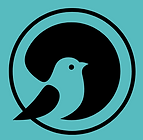The Inner and Outer Wildness That Brings Us Home: Everyday Magic, Day 1041
- Caryn Mirriam-Goldberg
- Jul 18, 2021
- 4 min read
Updated: Sep 25, 2023

Here’s a post about my new podcast, “Tell Me Your Truest Story.” Please listen to the podcast here.
For me, it’s always been the trees and sky, sun wavering on the surface of water, wind making its invisible presence known through the curving of prairie grass, the darkening night sky and the stars that emerge. It’s always been the bluebird on the edge of the field, the katy-did and katy-didn’t call of the katydids, the smell of cedar when I rub a small piece between my thumb and forefinger.
No wonder that when I discovered bioregionalism — a calling to learn how to live from where we actually live — I felt metaphorically and literally home. This movement that came of age in the early 1980s (in concert with my own young adulthood) focuses on how to be “…..lifelong students of how to live in balance with our eco-communities. We recognize that we are part of the web of the life, and that all justice, freedom and peace must be grounded in this recognition” (from a bioregional primer I put together with others some years back).
I found not just a name for what I know in my bones but kindred spirits, many of my closest friends to this day, including my husband. The bioregional congresses or gatherings we trekked to in Maine or Texas, British Columbia or Morelos, Mexico, deepened our connection to the places we left behind so that we could return more informed, inspired, and committed to keep community and make change. My bioregional pals have gone on to start land trusts, restore rivers, protect old-growth forests, manage community garden projects, and make no end of art, music, dance, and poetry that helps us breathe into where we live.
Which is a long-winded way of saying how I met Stephanie Mills and David Abram and conceptualized the focus of my new podcast, Tell Me Your Truest Story. I first spied Stephanie in a big circle of 200 or so people at the first bioregional congress in Missouri in 1984 when, as a way to introduce herself, she said, “I want to learn about my inner wildness as well as the outer wildness.” Me too! I set out to get to know her, a very good move given that she’s an embodiment of wisdom, inquiry, and big vision into the harder and also more sublime edges of what it means to live in eco-community.
In 1988, at the bioregional gathering in Squamish, British Columbia, I met David, who not only did sleight of hand magic, but talked with expansive eloquence about how written language distances us from plants, animals, weather and earth, which also have their own language. I shivered in recognition, and when he moved to Lawrence to work on a post-doc at K.U., I made it a point to befriend him. He was sick at the time, so I would leave containers of soup at his doorstep, an offering of food to draw someone deeply connected to the wild out of his cave. It worked.
In the years since, both David and Stephanie have published the kinds of books that change lives, especially mine. David’s Spell of the Sensuous: Perception and Language in a More-Than-Human World, which he finished while in Lawrence, illuminate who we are in relation with the living earth. He writes,
0ur bodies have formed themselves in delicate reciprocity with the manifold textures, sounds, and shapes of an animate earth – our eyes have evolved in subtle interaction with other eyes, as our ears are attuned by their very structure to the howling of wolves and the honking of geese. To shut ourselves off from these other voices, to continue by our lifestyles to condemn those other sensibilities to the oblivion of extinction, is to rob our own senses of their integrity, and to rob our minds of their coherence. We are human only in contact, and conviviality, with what is not human.
Stephanie’s books, especially her Epicurian Simplicity, still tilts me toward being more where I am by growing my real-time awareness of leaves and insects, skies and ground. She writes, In Service to the Wild: Restoring and Reinhabiting Damaged Land,
In the land we may find solace for our wounds, privacy for a developing intimacy with a natural surround, an occasion for acting out healing processes that effect inner healing as well; or we may remain unconscious of and oblivious to the living community of the land. Numbed and paralyzed by the degree of damage that has been inflicted on the land, we may be domineering and exploitive toward it, or even blindly destructive. Our behavior toward the land is an eloquent and detailed expression of our character, and the land is not incapable of reflecting these statements back. We are perfectly bespoken by our surroundings.
My first episode, “The World is Made of Story” (taking its title from something David said during our interview), is about starting at the starting ground, right now and right here. What Stephanie and David have to say helps us listen to the stories that dissolve some of the boundaries between the inner and outer, which Rainer Maria Rilke speaks to in this poem:
Ah, not to be cut off,
not through the slightest partition
shut out from the law of the stars.
The inner – what is it?
if not intensified sky,
hurled through with birds and deep
with the winds of homecoming.














Comments